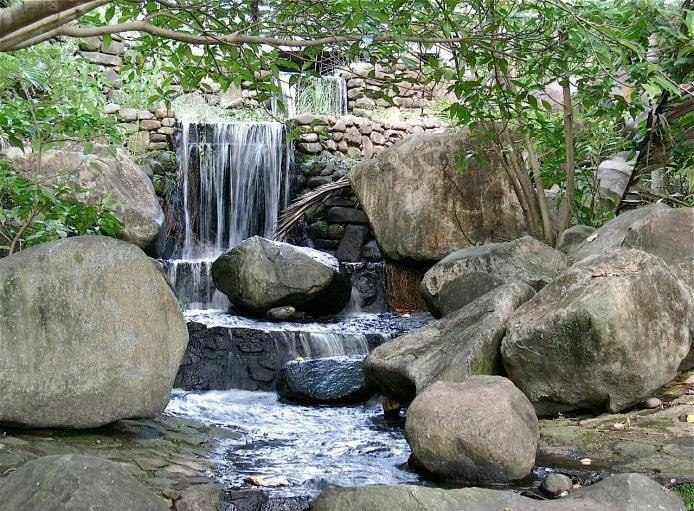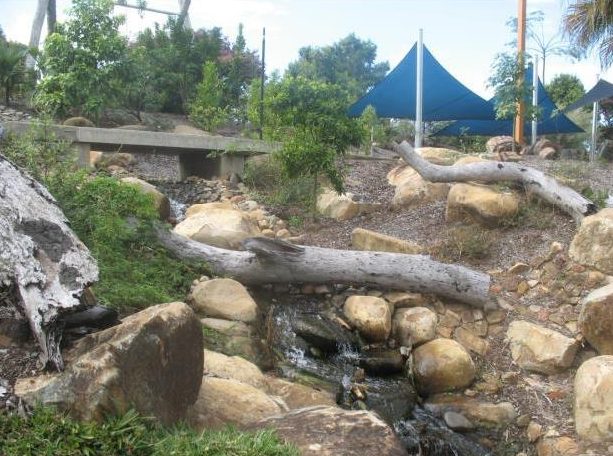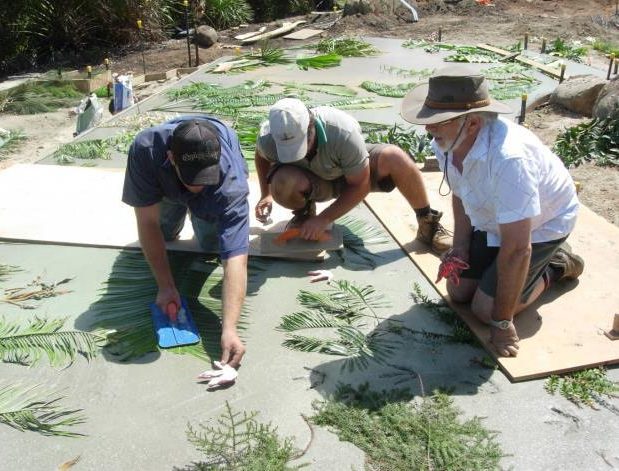
It would not have been possible to create the diverse range of parks and gardens, each with its own unique Australian regional character, without the close association I have enjoyed as a member of the Australian Plants Society. Being integrally involved with this organisation at all levels for more than 40 years, has allowed me the opportunity to access some of Australia’s foremost botanists and horticulturalists. This has ensured that every project for which I have been responsible celebrates the unique Australian flora of the relative bioregion by interpreting and demonstrating to the community the potential that the local flora has for use in amenity horticulture.
The Importance of Gardens
Throughout my career I have been fortunate to be able to convey this ‘Design with Nature’ philosophy through all of the projects, and specifically the public parks and botanic gardens for which I have been responsible. Public gardens generally and Botanic Gardens particularly are places where the community can be encouraged to reconnect with nature.
Contemporary urban communities are becoming increasingly divorced from the ‘natural’ landscape origins from which we all evolved, with consequent expanding physical and psychological problems. A garden is a special space that can restore our natural association with nature and importantly improve our health and wellbeing.
These are some of the tangible and intangible elements that a garden offers to those who experience them: stroll along the avenues; meander the pathways; explore progressively, enticed by glimpses, views and vistas; appreciate the innovative natural or built focal points; stop and smell the roses (or preferably the Wattle); appreciate the seasonal diversity; experience the sun and shade patterns; and importantly, understand the preferences of plants suited to differing environments and soils;
Inspiration for landscape and planting design
In commencing a project, I do not consciously set out to ‘design’ a landscape. My initial approach is practical rather than artistic. The inspiration is primarily derived from a detailed understanding of the physical site, the visual attributes and the imposed functional components of a project. This is complimented by identification and evaluation of the range of related issues that may be used to influence the planning and detail design – for instance related natural or cultural heritage stories can inspire layers of interest. To be successful the final outcome must have a strong sense of place and ready acceptance by those who use it. Without the combination of these two aspects any park or garden can never reach its intended potential.
The primary element of a landscape of any scale is the plant material. This dictates that the designer has a thorough knowledge of plant species for the region, their form, suitability, amenity, horticultural potential and particularly availability. Species selection and massing that considers growth habits, specific forms, seasonal effects and colours is the fundamental palette used to inspire the overall design.


Similarly, understanding the materials chosen for the built landscape elements will inspire and enhance the design, specifically when using innovative approaches to their use in construction. A park or garden can be distinguished as special or unique if the built elements are inspired by the forms found in the regional landscape or in the detail shapes and textures of rocks, plants or water. The ability to innovatively synthesise, interpret or conventionalise nature provides a range of planning and design opportunities that will firmly place any project in a logical relationship with its surrounding environment, whether this is urban or rural.
Linking with natural and cultural heritage
Design of any garden, public or private, is fundamentally a creative endeavour as you are constructing a contrived place that, in its planning and design, must react appropriately and sometimes innovatively to imposed site constraints and opportunities. Generally, these functional impositions (drainage issues etc.) can be designed to be positive elements of the garden – this is the creative challenge that can lift a design above the ordinary.
Critically analysing the forms and forces of nature provides strong prompts that suggest how to creatively combine the various hard and soft landscape elements. Whether the creative result is subtle or blatant, the opportunity exists for these artistic elements to enhance the observer’s understanding of the processes of nature. This is fundamentally important in a botanic garden, where it is vital to define the environment or habitat for specific plants or plant communities, so that the scientific value of the plant collection is enhanced and understood.
First impressions are the most lasting – so it is important to set the scene at the arrival locations by creating a strong visual and physical experience that attracts the observer, and tempting deeper exploration into the park or garden. It is important to incorporate or interpret local physical and heritage elements appropriately into the planning and design process to achieve local character and relationships. This requires detail research into the history and heritage of the site or locality.

It is important not to imitate nature, but aim to plan gardens and create associated elements that have a physical or aesthetic connection with nature. Be inspired by nature and natural processes in the planning and design process. These built or sculptural elements might be stylistically embellished to enhance the experience, sometimes using subtle messages or even frivolity to enliven and make a walk through a garden more memorable.
Application to Mackay Regional Botanic Gardens
In the Mackay Regional Botanic Gardens, a number of local characteristics have inspired the planning, design and the collection.
The anabranch of the Pioneer River forms Eulamere and Kaliguil Lagoons as the central feature of the Botanic Gardens. The steep to undulating slopes down to the water provide a strong basis for a variety of views, vistas and ecological niche environments. These are celebrated and enshrined in the overall site planning and design.
The intrusive volcanic hills typical of the coastal lowlands landscape is reflected in the site landform and winding pathway down through the Sarina Proserpine Garden to suggest the plant associations and altitude at which the related species naturally occur.
The century-old barnacle encrusted rainforest logs saved from the demolished finger wharf at Mackay Harbour initially logged from Fraser Island, were used in numerous ways throughout the Gardens: as the structure of the Tropical Shade Garden Fernery; clusters of tall stately pillars clothed in ferns and epiphytes; a large arbour of triangular frames extending geometrically along a walkway to support robust rainforest lianas;
Traversing the Coal Garden is ‘a walk back through time’, progressively suggesting the plant species of the various evolutionary eras planned to underline their economic importance and interpret the botanic derivation of the coal extracted from the nearby Bowen Basin.

In the Heritage Garden photographs of several of the significant local homestead gardens, now long gone, were used to create small cameo glimpse gardens to commemorate their contribution of imported botanic additions to the local tropical landscape. One was established by Baron Ferdinand von Mueller.
The Torres Strait Islanders and South Sea Islanders each have their own specific precincts inspired by their local homelands and plant communities to similarly celebrate their significant, if enforced, role in the fledgling sugar industry.
The Maltese Garden celebrates the important role of this emigrant community in developing the sugar industry and links the Mediterranean to the tropics through a native olive hedge beside the Bocce court as well as beds of Australian succulents.
The Screens and Hedges Garden comprises a collection of dense low-growing local species planted in a stylised arrangement of maze-like beds to research and demonstrate their value in this aspect of amenity horticulture. None of these species have ever been used in this way before.

Whatever the future holds for the planning and design of parks and gardens it is fundamentally important that Australian Native Plants are widely acknowledged as a principal component, in order to practice and celebrate Design with Nature.
* Lawrie Smith AM is one of our country’s leading landscape architects. Some of the more significant projects for which he has been responsible are: World Expo 88; the Australian Gardens at Liverpool International Garden Festival 1984; the International Garden and Greenery Exposition Osaka 1990; Regional Botanic Gardens in Gladstone, Bundaberg, Darwin, Mt. Isa, Longreach, Gold Coast, Barcaldine, Townsville, Maroochy, Tweed, Dubbo,
Cairns, Mackay and Whitsunday. He has held many honorary positions, including President of the Australian Institute of Landscape Architects Queensland, President of the Society for Growing Australian Plants Queensland, and National President of the Australian Native Plants Society (Australia). Lawrie was an Australian Flora Foundation Councillor from 1991 to 2000.
